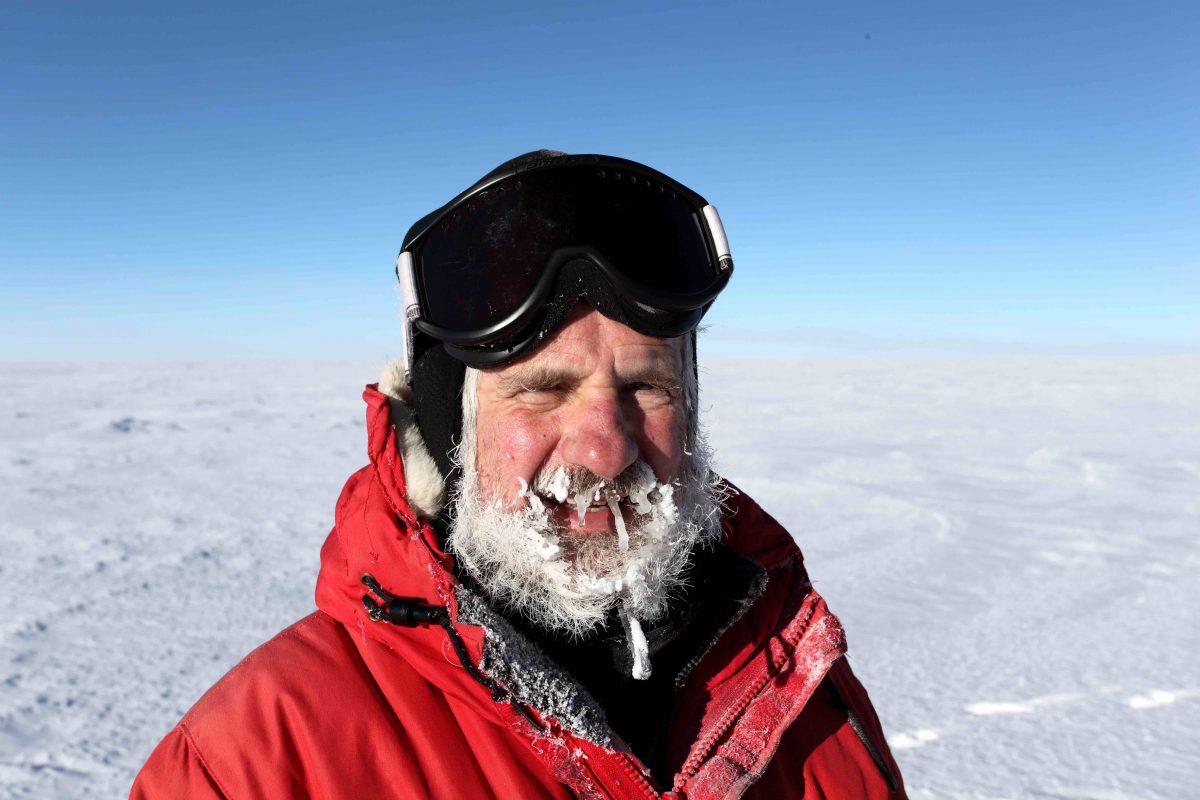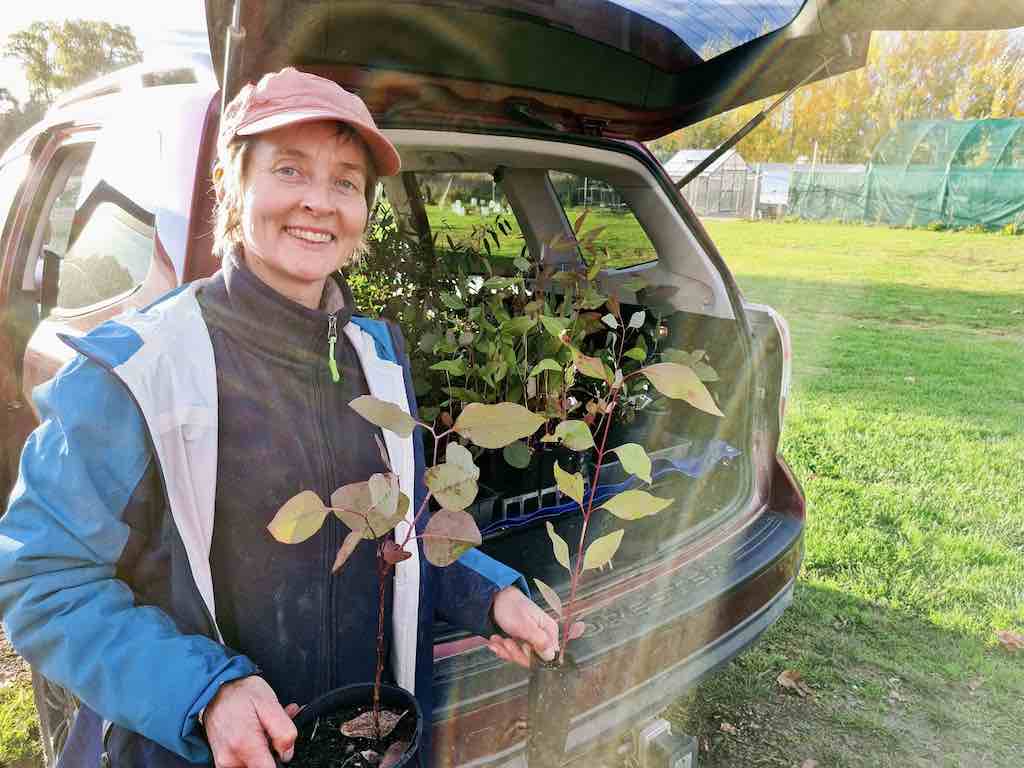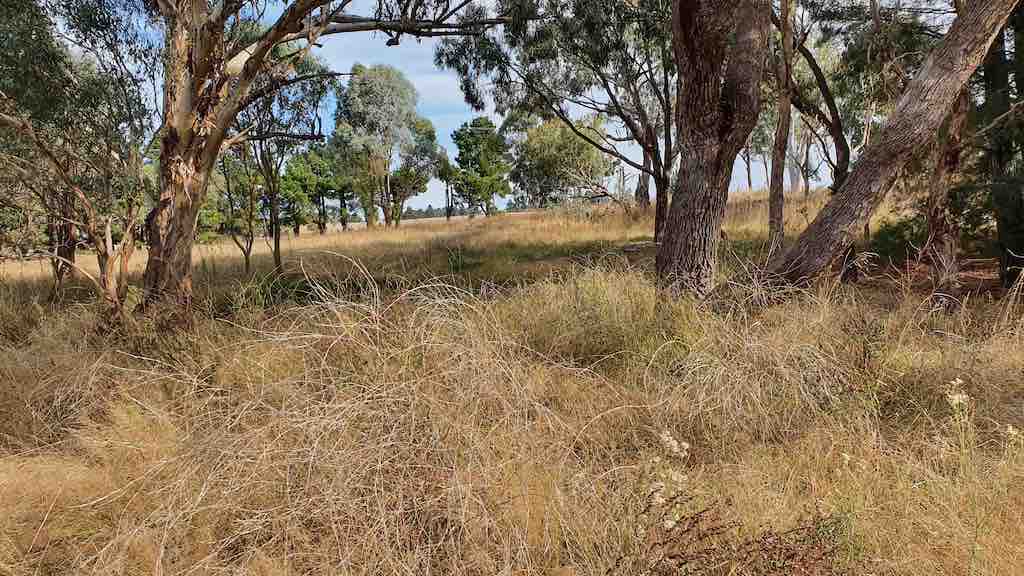
John Storey, who led scientific expeditions to Antarctica, has ice forming across his face at a high-altitude field camp. His sights are set across a vastly different horizon these days. Photo: Geoff Sims.
An astrophysicist who led science expeditions to Antarctica is leading a Landcare group at Gunning with farsighted goals as well.
“There is an awful lot more trees here, it is very much a change of pace,” says John Storey in a wry nod to Gunning’s green landscape that has replaced his previous, ice-covered stomping ground.
He believes joining Landcare is an excellent icebreaker for new arrivals, as he was several years ago.
Having taught physics at the University of NSW for many years, John chairs the Gunning District Landcare which has far-reaching plans for about a dozen rare red box, yellow box and Blakeleys red gum trees.
They stand on 2.2 hectares in a neglected corner of Gunning Showground previously used to hold sheep during shows. At one stage a course of horse jumps ran around the foot of the trees. The box gums’ significance was confirmed several years ago after the Upper Lachlan Shire Council engaged ecologist Tony Saunders to prepare a study which identified the box gum grassy woodland’s critically endangered ecological community.
“That report told people what they kind of knew all along, that this was something pretty special with a great variety of plants and animals,” John said. “And if we could get the rubbish and weeds out of it and clean it up a bit, it could be quite a jewel for the community,” he said.
Tony, who tragically died recently, identified the trees as part of a corridor link to the rich biodiversity of birds, insects and other native animals in Gunning, Dalton, Breadalbane and Collector districts.
Since then, the Landcare group has planted 75 box gums, she-oaks, wattles and other species that will grow up with naturally occurring saplings.
The Landcare group is gathering momentum too. Having secured another major grant of $275,000 it will turn the grassy woodlands into a community park, accessible by a network of paths for people of all abilities, including those needing wheelchair access.
“What makes this land special is its close to the centre of a village, just up the road from the primary school, and it’s cost-effective, given that it is already bushland, for us to fix it up and make a community park with paths through it, and interpretive signs,” John said.
“Hopefully we will get breeding populations there, it will be of benefit not just in the immediate vicinity within the confines of the bush block, but those wildlife communities can help spread out to adjacent areas.”
Interpretive signs will explain different features of the plants and the Landcare group is working with the Ngunnawal community to have a complementary set of signs that will set out the Indigenous interpretation of the importance of things throughout the block.

Replacing paddock trees cleared over many years of European settlement has kept Gunning District Landcare members busy. Coordinator Dr Sonya Duus is shown above unloading gum trees. Photo: Gunning District Landcare.
The Landcare group’s vision is a place where people can replenish their spirit, learn and understand the land, and sit around as the First Australians did and chat and mull over issues. “Being close to the school it can form an outdoor classroom where teachers can bring children and make their education a little more meaningful,” John said.
The aims of the new park are as broad as the backgrounds of people in the Landcare group. They’re from well-established farming families, the CSIRO and have expertise in horticulture and handling chemicals like pesticides. Their coordinator Sonya Duus has a PhD in environmental history.
The new park’s progress coincides with Gunning’s population growth from an expanding Canberra.
“Gunning is fortunate that it has this lovely, cohesive community, and I see the Landcare as having a dual role: one to help create a sustainable, ecologically healthy environment, and the other to help create a cohesive and harmonious community,” John said.
“As the demographics of the region change, there is potential for stresses to develop within a community,” he said.
He believes an active Landcare program would address any potential stress by offering to bring people together on projects like the new ecological park that benefit the environment and health of the community.

This may look like unattractive scrub country, but it is a rare patch of remnant bushland that will be turned into a community park while continuing to provide shelter for birds and other animals to breed. Photo: Gunning District Landcare.
John and his wife Michelle came to Gunning after 35 years in Sydney.
“I was brought up in the bush, I think you tend to go home as you get older and I feel very much at home in this rural environment,” he said.
“We have a small property just out of Gunning which is mostly bushland, about 600 acres. We look after that, and helping Landcare is something I feel like I can contribute to,” he said. “As you say it is very different to leading a scientific expedition to Antarctica or writing lecture notes for students, but a very pleasant change nevertheless.”






